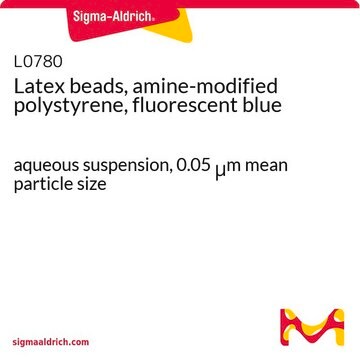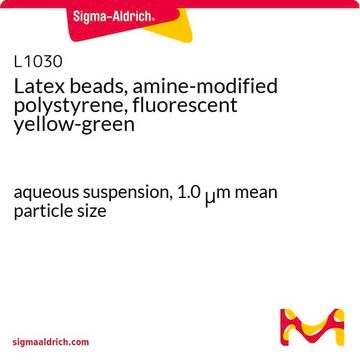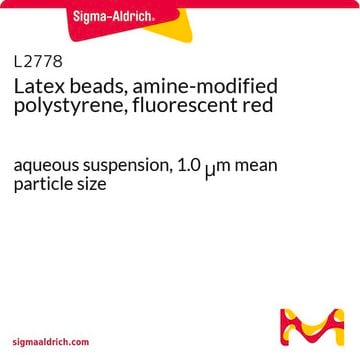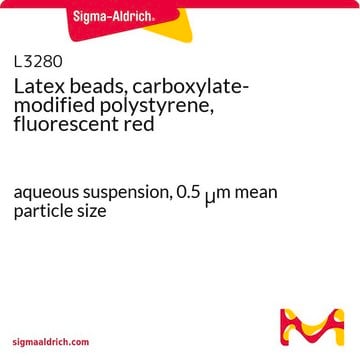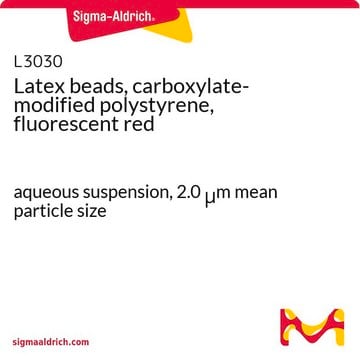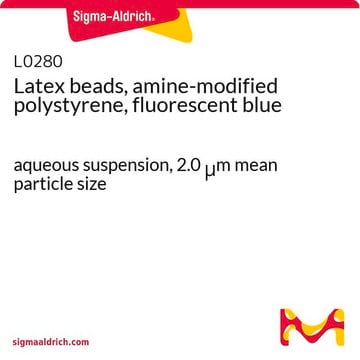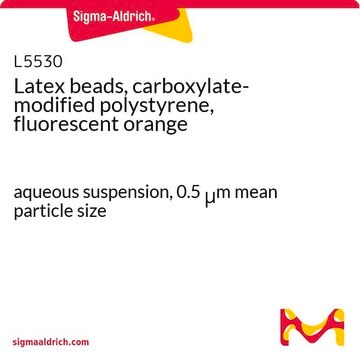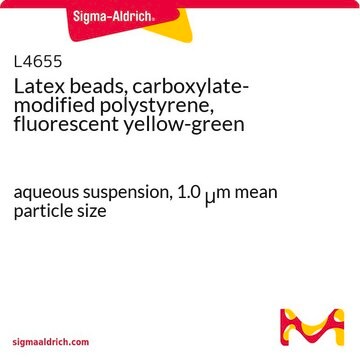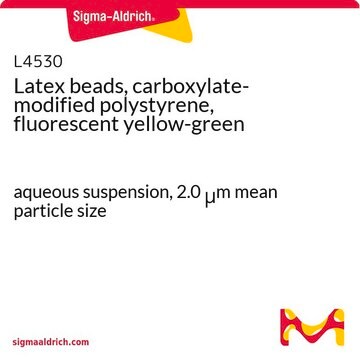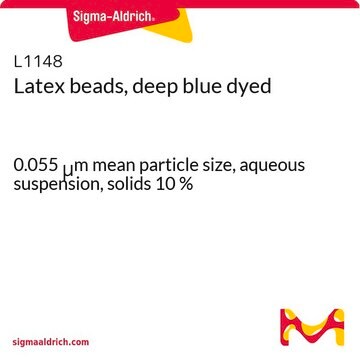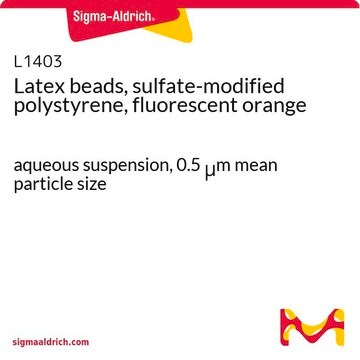Unfortunately, the molecular weight of this product is not determined.
L9904
Latex beads, amine-modified polystyrene, fluorescent orange
aqueous suspension, 0.1 μm mean particle size
Synonym(s):
Amine-Modified Latex Beads, Fluorescent Orange Beads
About This Item
Recommended Products
form
aqueous suspension
composition
Solids, 2.5%
technique(s)
cell based assay: suitable
mean particle size
0.1 μm
fluorescence
λex ~475 nm; λem ~540 nm
application(s)
cell analysis
Looking for similar products? Visit Product Comparison Guide
Application
Storage Class Code
10 - Combustible liquids
WGK
WGK 3
Flash Point(F)
Not applicable
Flash Point(C)
Not applicable
Regulatory Listings
Regulatory Listings are mainly provided for chemical products. Only limited information can be provided here for non-chemical products. No entry means none of the components are listed. It is the user’s obligation to ensure the safe and legal use of the product.
JAN Code
L9904-BULK:
L9904-1ML:
L9904-VAR:
Choose from one of the most recent versions:
Already Own This Product?
Find documentation for the products that you have recently purchased in the Document Library.
Customers Also Viewed
-
is it possible to know the molecoar weight to calculate the molarity of the suspension?
1 answer-
Helpful?
-
-
How did you verify the amine coating? What spectroscopy method have you used to verify the amine coating? Can you show the result that proves that the amine has been coated? (For example, if you have done FTIR, then can you show us the peaks)
1 answer-
The amine modification of these beads is validated through an extensive series of titrations. Unfortunately, the method is considered proprietary. There is no specific documentation or data available to share.
Helpful?
-
-
what is the concentration of polystyrene microplastic [mg/ml] in this product No. L9904
1 answer-
The concentration of this aqueous suspension is 2.5% w/v or 2.5g/100 mL. This equates to 25mg per 1 mL package.
Helpful?
-
Active Filters
Our team of scientists has experience in all areas of research including Life Science, Material Science, Chemical Synthesis, Chromatography, Analytical and many others.
Contact Technical Service